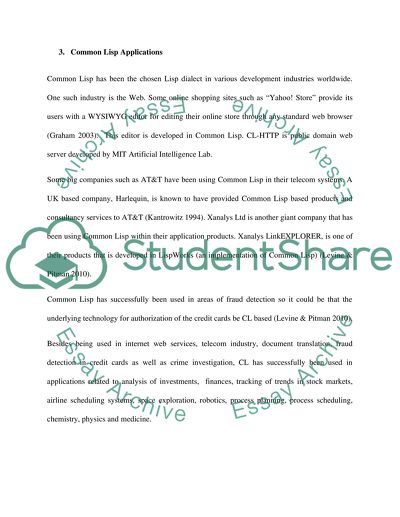Cite this document
(“Common LISP Research Paper Example | Topics and Well Written Essays - 2000 words”, n.d.)
Common LISP Research Paper Example | Topics and Well Written Essays - 2000 words. Retrieved from https://studentshare.org/information-technology/1588739-common-lisp
Common LISP Research Paper Example | Topics and Well Written Essays - 2000 words. Retrieved from https://studentshare.org/information-technology/1588739-common-lisp
(Common LISP Research Paper Example | Topics and Well Written Essays - 2000 Words)
Common LISP Research Paper Example | Topics and Well Written Essays - 2000 Words. https://studentshare.org/information-technology/1588739-common-lisp.
Common LISP Research Paper Example | Topics and Well Written Essays - 2000 Words. https://studentshare.org/information-technology/1588739-common-lisp.
“Common LISP Research Paper Example | Topics and Well Written Essays - 2000 Words”, n.d. https://studentshare.org/information-technology/1588739-common-lisp.


